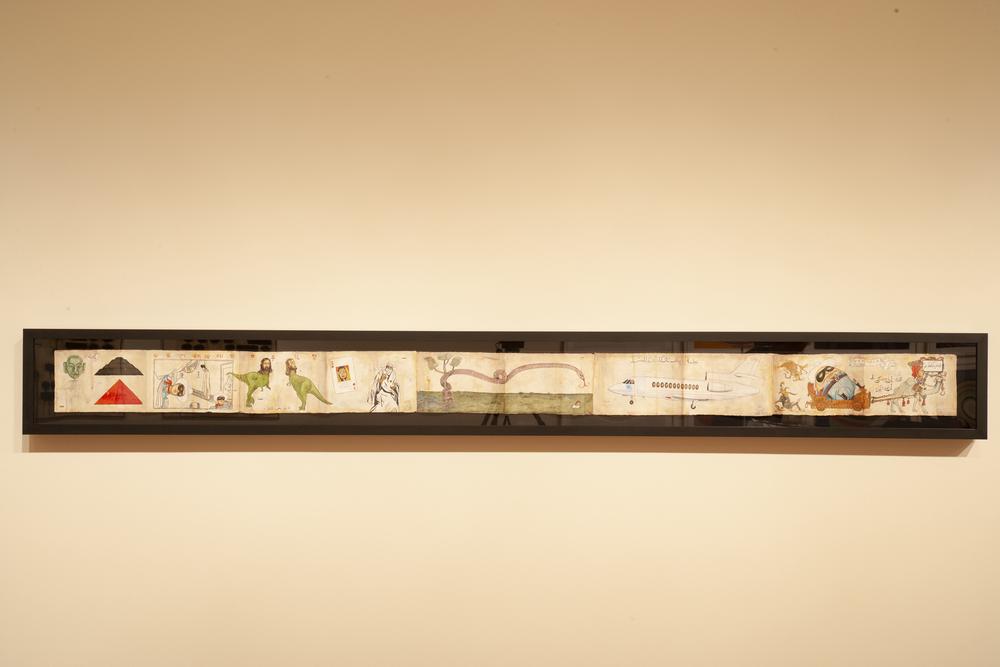Enrique Chagoya. Utopian Cannibal Adventures

In the early 1990s, Enrique Chagoya began creating modern-day codices—accordion-like compositions like those of pre-Columbian books, most of which were destroyed during the Spanish conquest—that challenge historical narratives. They “present ‘what if’ scenarios where non-Western modes of communication reign.”1 The Labyrinth of Liberty (2004) is a ten-panel work on paper that combines a Humpty Dumpty caricature of the Lone Ranger with Christian iconography, dinosaurs, airplanes, Mayan gods and Aztec pyramids, and Arabic and Chinese scripts referencing the road to Mecca. The codex unfolds in what the artist referred to as “utopian cannibalism.”2 Rather than dominant cultures feeding off the traditions, objects, and ideas of the conquered or colonized, in Chagoya’s imagined utopian version the cannibalized culture reverses that history.
E. Carmen Ramos, “Commentaries on the Artworks,” in Ramos, ed., Our America: The Latino Presence in American Art (Washington, DC: Smithsonian American Art Museum, 2014), 135. ↩︎
Enrique Chagoya, in Mel Watkin, Utopian Cannibal: Adventures in Reverse Anthropology (St. Louis: Forum on Contemporary Art, 2001). ↩︎